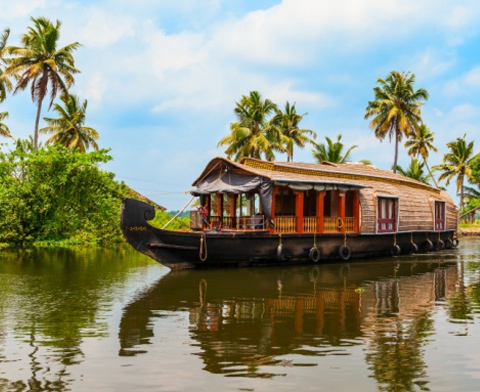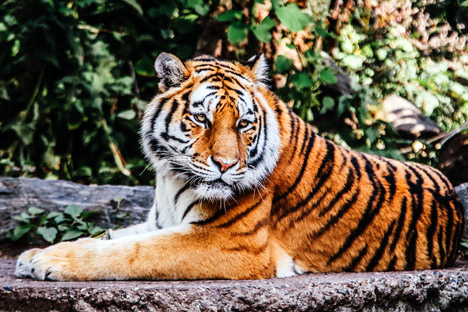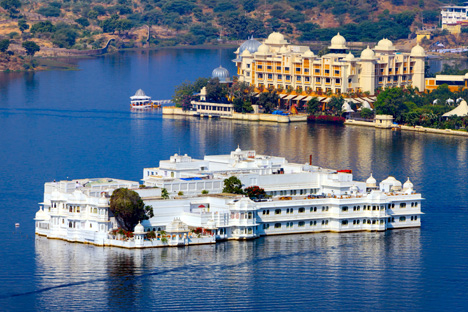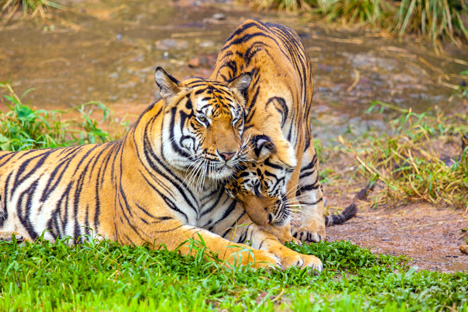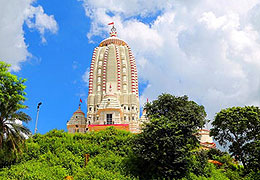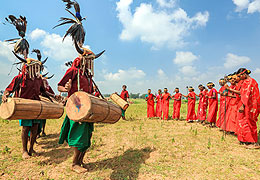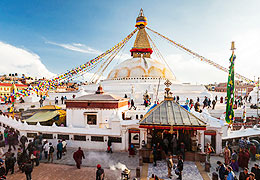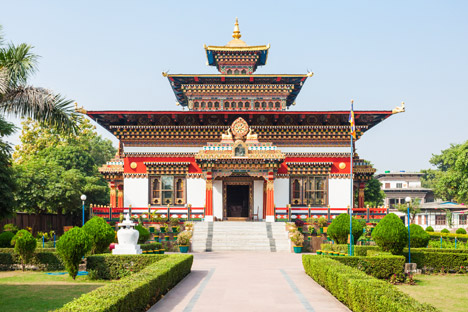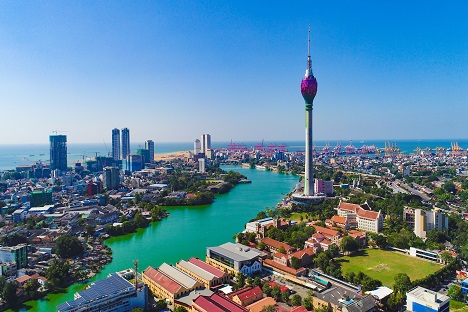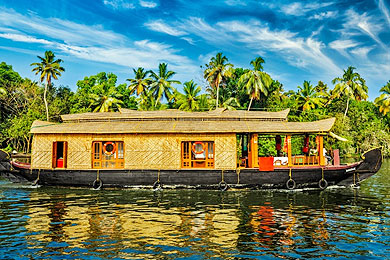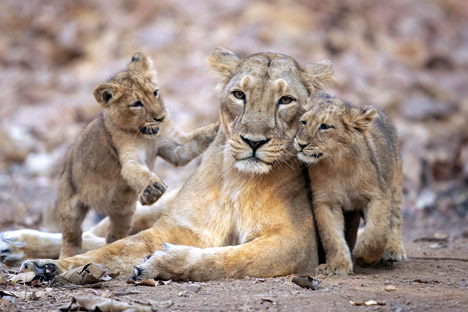Flora and Fauna of Gir National Park
The Gir National Park has a topography that supports various plant life, including deciduous, semi-evergreen, and evergreen trees. There are also savannah-like grasslands, thorny jungles, open mixed woodland areas, and many more places where you might find them. However, a significant portion of the park, primarily made up of teak trees, is covered by a deciduous and mixed forested belt.
Compared to evergreen trees, which appear shaded, moisture-retaining, and broad-leaved, deciduous trees are actually of the dry variety. On the coastal side of the forest department, various plants such as casuarinas and Prosopis have been planted.
Moreover, Gir is renowned for having more than 2,300 species of fauna, many of which are unique. Statistics show that it protects close to 300 kinds of lions and leopards. The fact that Asiatic lions reside here makes Gir famous. Regarding the number of Asiatic lions, only Africa is behind Gir. In addition, carnivores like jungle cats, striped hyenas, Indian leopards, Indian mongoose, and Golden jackals can be seen alongside mammals like porcupines and hares.
Places to Visit Near Gir, National Park
This renowned national park in Gujarat is a must-visit for magnificent animals. While enjoying nature and observing endangered species, you may visit nearby places with your family or friends. Here are some of the best places to visit.
- Somnath Temple: Lord Shiva is the owner of this historic Hindu shrine. It is one of our nation’s twelve Shiva Jyotirlingas. Somnath is a pleasant shore temple with magnificent architecture and a spiritual ambiance. Visitors to Gir should take the time to visit this incredible temple.
- Darbar Hall: Near Diwan Chowk lies the ancient historical palace known as Darbar Hall Museum, which displays the exotic possessions of former Nawabs. The museum houses a vast collection of historical artifacts, including swords, armor, palanquins, chandeliers, clothing, thrones, tapestries, and paintings. This museum is a must-visit location in Gir National Park since it will unquestionably take you to the time of the Nawabs.
- Kamleshwar Dam: A beautiful spot that should be noticed is Kamleshwar Dam, which is situated within the safari park. One of the seven rivers that drain the sanctuary is the Hiran River, across which the dam has been built. The dam’s location serves as a crucial nesting habitat for the well-known marsh crocodiles and a haven for many different bird species.
- Junagadh Zoo: The Nawab established the Junagadh Zoo in 1863 to save the lions from extinction. However, these lions have been endangered due to excessive trophy hunting. So he found the zoo that would eventually become the renowned Safari Park in a desperate bid to save the lions.
Safari in Gir National Park
Jeep Safari
Jeep safaris are the most popular and common way to explore Gir National Park. The park has three Gir Jungle Trail vehicle excursions each day. In addition to numerous creatures and vibrant birds, one can see lions in their native environment during this 3-hour Jeep safari. A limited number of vehicles are allowed into the park at a time. Jeep safaris are available for both morning and evening rides, each offering different experiences and wildlife sightings.
Safari Timings
Winter (16 October to 28/29 February)
- Morning – 06:30 a.m. to 09:30 a.m.
- Evening – 09:30 a.m. to 12:30 p.m.
Summer (1 March to 15 June)
- Morning – 06:00 a.m. to 09:00 a.m.
- Afternoon- 09:00 a.m to 12:00 p.m
Devalia Safari
There is a site called Devaliya inside the Gir National Park to the west of Sasan Gir Village, about 12 km from Sasan Gir, and that area has now been designated as a Gir Interpretation zone. 4.12 km of fencing surrounds this location. This space has been set aside to lessen Gir National Park’s demands and emphasize its significance. The tourists visiting the Gir Interpretation Zone leave with utmost satisfaction as it makes spotting animals easier. In Devaliya, you can take a minibus safari or a gypsy safari to explore this region.
Minibus safari in Devaliya offers a singular opportunity to witness nature’s wildlife and beauty. Most wild animals may be observed in the open and in their natural habitat. The beauty of the flora and grassland of Devaliya is especially enchanting.
Summer Timings
- Morning- 7.30 AM – 11.00 AM
- Evening- 3.00 p.m. – 5.00 p.m.
- Closed on Wednesday
Gir Zones
Gir National Park has designated zones for visitors. The park is divided into different tourism zones, each with its own entry gate. Thus, the zones help manage the visitor flow and provide access to different parts of the park for wildlife safaris. Moreover, zones of Gir National Park aim to offer different experiences and cater to various visitor preferences while ensuring the conservation of the park’s wildlife and ecosystems.
Sasan Gir Zone
This is the most popular and frequently visited zone of Gir National Park. It is known for its high concentration of Asiatic lions. The main entry gate for the Sasan Gir Zone is the Sasan Gir gate, which is also the park’s headquarters. This zone offers the best chances of lion sightings.
Devalia Interpretation Zone (Devalia Safari Park)
Devalia is an enclosed safari park within Gir National Park. It provides a more controlled environment for tourists to view wildlife. Visitors can take a safari within this zone and observe lions, leopards, deer, and other animals up close. It is an excellent option for those who want to see wildlife without entering the core areas of the park.
Kankai Zone
The Kankai Zone has its own entry gate. It is a lesser-visited area compared to Sasan Gir, offering a quieter and more pristine wilderness experience. This zone also provides opportunities to spot wildlife.
Resorts at Gir National Park
Promoting tourism in Gujarat greatly benefits from high-quality hotels and resorts near any wildlife refuge. For this reason, numerous new hotels and resorts have been built over the past couple of years. The Gir hotels are remarkable in some aspects, whether the landscape or the architecture. These residences are furnished with contemporary comforts and conveniences that visitors greatly value while on vacation. Some of the resorts are-
- Gir Serai – IHCL SeleQtions
- Gir Lion Safari Lodge.
- The Fern Gir Forest Resort
- Gir Birding Lodge
- Gir Jungle Lodge
- Jagira Ananta Elite
